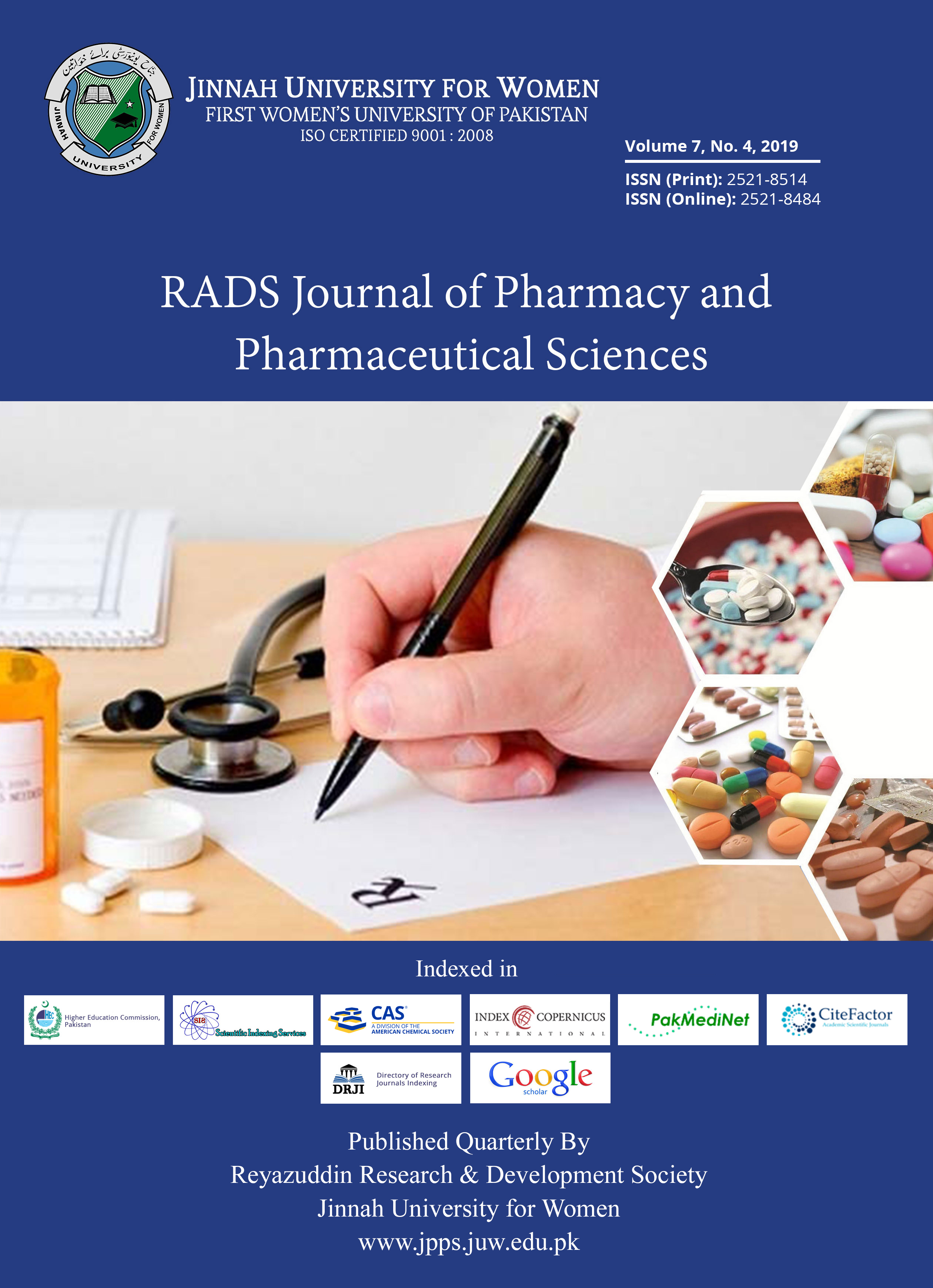Synthesis, Characterization and In Vitro Antibacterial Derivatives of Doxycycline
Abstract
Objective: Nowadays antibacterial drugs resistance is major problem in the world. To overcome this problem, some novel derivates of doxycycline were synthesized by single step condensation reaction with ten different types of aromatic and aliphatic aldehydes and ketones in ethanol as solvent and acetic acid as catalyst. In these reactions, deprotonation of primary amine occurs that results in formation of imine.
Methods: All the derivatives physically characterized and confirmed by analytical techniques i.e. FTIR and 1H NMR and 13C NMR. The derived compounds have exhibited significantly more active against both gram positive as well as gram negative bacterial strains as compared to parent drug.
Results: Derived Schiff bases RDC2, RDC4 and RDC10 showed zone of inhibition against Bacillus subtilis as compared to doxycycline and derived Schiff bases RDC1, RDC2, RDC5, RDC6, RDC7 and RDC8 showed more zone of inhibition against Micrococcus luteus as compared to doxycycline. Yield (75%), m.p. 180-185°C, Mol. Wt. 1063, Elemental Analysis: (Calculated) for C58H54N4O16: iC, 65.53; H, 5.12; N, 5.27; (Found): C, 65.49; H, 5.18; N, 5.37; FTIR (ν, cm‐1): 3066 (=C-H), 1665(C=N), 1585, 1490(C=C, phenyl), 3650(OH), 1692 (C=O); 1H NMR (DMSO−d6, δ, ppm), 6.02-6.03 d, 6.91-6.92 d, (=CH-); 6.88-6.89 t (=CH), 2.89-2.90 d, (-CH); 1.07-1.08 q, (-CH3), 3.38-3.39 d; 3.17-3.18 d, (CH), 1.47-1.48 t (CH), 1.48 s, (CH3), 6.96-6.97d, 7.577-7.588 d, (-CH=) 15.21 s (OH); 4.62 s (OH); 1.46-1.47 s (OH); 13C NMR (DMSO−d6, δ, ppm).
Conclusion: Doxycycline is among broad-spectrum tetracycline. The Schiff bases derived from doxycycline show significantly highly active against gram negative bacteria as compared to doxycycline. In future further study on these derived compounds will help in market new derivative of doxycycline, which will have more broad-spectrum activity than doxycycline.
Copyright (c) 2020 RADS Journal of Pharmacy and Pharmaceutical Sciences

This work is licensed under a Creative Commons Attribution-NonCommercial 4.0 International License.
Submitting a manuscript to a journal implies that the work has not previously been published in any other journal, printed or online (save as an abstract or an academic thesis), and that it is not currently being considered for publication elsewhere.















